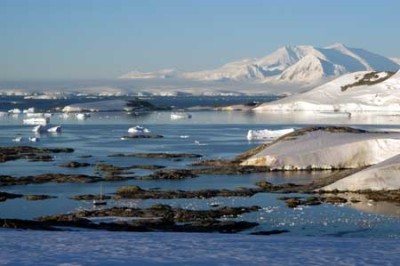
03 March 2007 | Position 55 49.5'S 67 30.7'W
01 March 2007 | Position 58 34'S 67 00'W
24 February 2007 | Position 64 19.5'S 62 55'W
22 February 2007 | Position 64 54'S 62 52'W
20 February 2007 | Position 64 49'S 63 30'W
20 February 2007 | Position 64 49'S 63 30'W
18 February 2007 | Position 65 06'S 64 04'W
16 February 2007 | Position 65 06'S 64 04'W
14 February 2007 | Position 65 26'S 65 22'W
11 February 2007 | Position 66 02'S 65 24'W
09 February 2007 | Position 66 02'S 65 24'W
06 February 2007 | Position 66 52'S 66 47'W
05 February 2007 | Position 66 02'S 65 24'W
04 February 2007 | Position 66 02'S 65 24'W
02 February 2007 | Position 65 08'S 64 02'W
28 January 2007 | Position 64 49'S 63 30'W
26 January 2007 | Position 64 49'S 63 30'W
25 January 2007 | Position 64 32'S 62 00'W
25 January 2007 | Position 64 32'S 62 00'W
24 January 2007 | Position 64 32'S 62 00'W
Pleneau/Hovgaard Islands
18 February 2007 | Position 65 06'S 64 04'W

For the last few days we have been enjoying the spectacular scenery at the southern end of the Le Maire channel from a secure mooring spot. Tied up amongst numerous rocks and skerries that lie between Hovgaard and Pleneau islands (see photo) we have been treated to 2 days of perfect weather. A big rookery of Gentoo penguins nearby has enticed us to sit for hours and we have been observing the next phase of the breeding cycle. Although there are still a few young chicks to be seen, most are almost fully fledged and full of curiosity. The feeding chases have taken on a new intensity and often the adults lead the chicks all the way to the water's edge and plunge in. This seems to be part of a training process to teach the chicks where to find food, as the adults emerge from the water within moments to feed the waiting chick. Older chicks sometimes follow the parent into the water at a run, only to halt in surprise and stand staring at the sea. Many adult birds now look skinny compared to their sleek, plump chicks, showing what a toll the raising of the young penguins takes on them. Once they part from the chicks they will spend some time at sea feeding themsleves before returning to molt. During the weeks of molting they cannot enter the water as their specially designed feathers provide insulation and waterproofing and without them they would not survive. All their energy is spent growing a new set of feathers as fast as possible, a process that normally takes about 3 weeks.
Comments
| Vessel Name: | Wandering Albatross |
Gallery not available